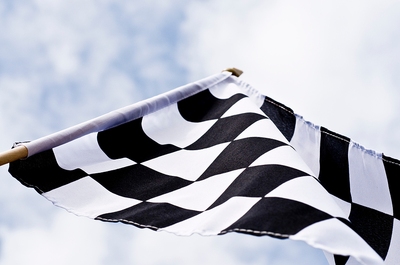 If you have ever taken part in a running race before, you will know that everyone is given the time required to reach the end of the course, within reason anyway.
If you have ever taken part in a running race before, you will know that everyone is given the time required to reach the end of the course, within reason anyway.
Organisers at the London Marathon in 2002 did not hang around for the five days it took Lloyd Scott, dressed in a full deep-sea diving suit, to complete the race.
For almost everyone else though, they were able to cross the finishing line while the streets were still lined with cheering spectators.
Formula 1, and indeed most other motorsports, work a little differently though.
For the world’s most elite car racing competition, it is a regular sight for some drivers not to complete the full race, usually because they are too far behind the winner.
This, as we will soon explain, does not mean they simply come to a stand-still on the middle of the track, however.
Can F1 Races End Early?
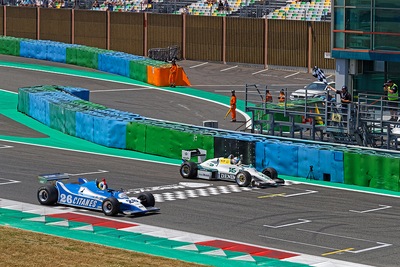 The rules of Formula 1 state that no race should last more than two hours if there are no red flags. If the race needs to be suspended, however, then the maximum permitted race period is three hours (reduced from four for the 2021 season). While F1 powers went to the effort of adjusting the rules in 2020, it seems rather a wasted effort given how rarely the time limit comes into play.
The rules of Formula 1 state that no race should last more than two hours if there are no red flags. If the race needs to be suspended, however, then the maximum permitted race period is three hours (reduced from four for the 2021 season). While F1 powers went to the effort of adjusting the rules in 2020, it seems rather a wasted effort given how rarely the time limit comes into play.
Only one race in Formula 1 history has been cut short due to the time limit, the 1984 Dallas Grand Prix. As no red flag was waved during the race, the standard two-hour time limit was applied. The incredibly hot conditions and subsequent, disintegrating track made quick racing an impossibility. For some drivers, just being in the car proved too much. Indeed, only eight drivers managed to complete 90% or more of the entire race. Nobody made it to 100% though, as due to the time limit, the race ended with leader Keke Rosberg completing 67 of the initially planned 68 laps.
It is also possible that races are simply abandoned and this is what signals their abrupt end. Although this too is something of a rarity, there have been a few more instances than exceeding the time limit. Since 1950, a red flag has been shown in 78 races but in the majority of cases, the race was able to resume following the stoppage. There are 13 exceptions though with stewards agreeing that it was not safe or appropriate to continue the event. Four of these have come this side of the century: the 2003 Brazil Grand Prix, the 2009 Malaysia Grand Prix, the 2014 Japan Grand Prix and the 2021 Belgium Grand Prix.
When abandonment is required, race results are determined by positions as they were a little before the red flag was shown. In the example of the 2014 Japanese Grand Prix (below), the second and final red flag was waved during lap 46. Rather than ending the race at this very moment, with cars potentially side by side, the results were based on standings after 44 laps. This is in line with F1 regulations that state in such cases, race results should be determined by the penultimate fully completed lap.
| Pos. | Driver | Number | Team | Race Time | Points |
|---|---|---|---|---|---|
| 1 | Lewis Hamilton | 44 | MERCEDES | 01:51:43 | 25 |
| 2 | Nico Rosberg | 6 | MERCEDES | +9.180s | 18 |
| 3 | Sebastian Vettel | 1 | RED BULL RACING RENAULT | +29.122s | 15 |
| 4 | Daniel Ricciardo | 3 | RED BULL RACING RENAULT | +38.818s | 12 |
| 5 | Jenson Button | 22 | MCLAREN MERCEDES | +67.550s | 10 |
| 6 | Valtteri Bottas | 77 | WILLIAMS MERCEDES | +113.773s | 8 |
| 7 | Felipe Massa | 19 | WILLIAMS MERCEDES | +115.126s | 6 |
| 8 | Nico Hulkenberg | 27 | FORCE INDIA MERCEDES | +115.948s | 4 |
| 9 | Jean-Eric Vergne | 25 | STR RENAULT | +127.638s | 2 |
When Do Most F1 Races End?
Ignoring these rather freak occurrences, F1 races start the process of finishing whenever the first driver reaches the chequered flag. At this moment, all other drivers on the track are automatically deemed to be on their final lap. For those trailing the winner by a matter of seconds, this would be the case anyway.
For drivers that have been lapped previously though, what this means for them is that they will not be able to complete the full number of laps. If Lewis Hamilton had twice passed Mick Schumacher at Silverstone, this means the German would only end up completing 50 of the 52 laps.
How Are Race Results Determined
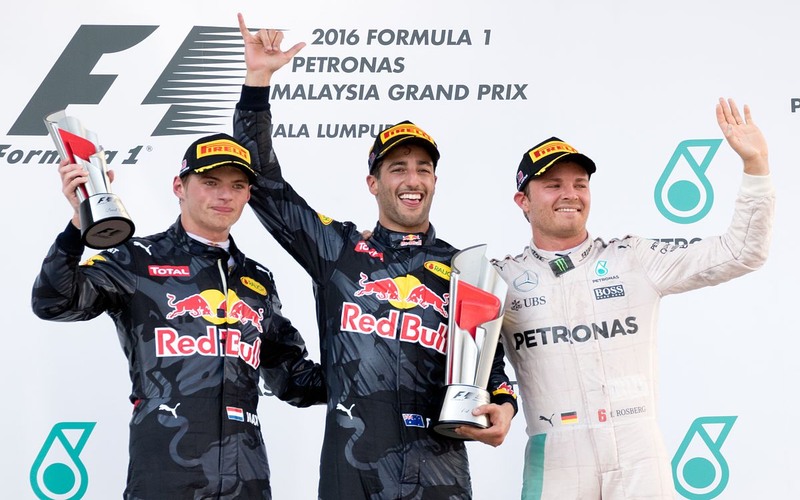
Carrying on from the example above, if Mick Schumacher (lapped twice) found himself sitting between first-placed Hamilton and second-placed Max Verstappen, this does not mean he ends up taking second place for himself. Although he would technically be the second car to finish the race, this has no impact on the result of the contest. This is because the number of laps completed is the first thing used to determine rankings in the race classification.
Take a look at this example below from the 2021 Dutch Grand Prix:
| Pos. | Driver | Number | Team | Race Time | Points |
|---|---|---|---|---|---|
| 1 | Max Verstappen | 33 | Red Bull | 1:30:05.395 | 25 |
| 2 | Lewis Hamilton | 44 | Mercedes | +20.932 | 19 |
| 3 | Valtteri Bottas | 77 | Mercedes | +56.460 | 15 |
| 4 | Pierre Gasly | 10 | AlphaTauri | +1 lap | 12 |
| 5 | Charles Leclerc | 16 | Ferrari | +1 lap | 10 |
| 6 | Fernando Alonso | 14 | Alpine | +1 lap | 8 |
| 7 | Carlos Sainz Jnr | 55 | Ferrari | +1 lap | 6 |
| 8 | Sergio Perez | 11 | Red Bull | +1 lap | 4 |
| 9 | Esteban Ocon | 31 | Alpine | +1 lap | 2 |
| 10 | Lando Norris | 4 | McLaren | +1 lap | 1 |
| 11 | Daniel Ricciardo | 3 | McLaren | +1 lap | 0 |
| 12 | Lance Stroll | 18 | Aston Martin | +2 laps | 0 |
| 13 | Sebastian Vettel | 5 | Aston Martin | +2 laps | 0 |
| 14 | Antonio Giovinazzi | 99 | Alfa Romeo | +2 laps | 0 |
| 15 | Robert Kubica | 88 | Alfa Romeo | +2 laps | 0 |
| 16 | Nicholas Latifi | 6 | Williams | +2 laps | 0 |
| 17 | George Russell | 63 | Williams | +3 laps | 0 |
| 18 | Mick Schumacher | 47 | Haas | +3 laps | 0 |
| NC | Yuki Tsunoda | 22 | AlphaTauri | DNF (48) | 0 |
| NC | Nikita Mazepin | 9 | Haas | DNF (41) | 0 |
At Zandvoort, only three drivers (Verstappen, Hamilton, Bottas) completed the whole race, that is, the full 72 laps. All other drivers were forced to stop, one, two or three laps short. In all cases, the order is simply decided by who completed x number of laps first. Here, Pierre Gasly (4th) was the first to complete 71 laps while Daniel Ricciardo (11th) was the last do to so.
Although a suspected gearbox problem ended George Russell’s race prematurely, he had completed 69 full laps much earlier than Schumacher. So, even though he had retired in the pits before Verstappen crossed the finishing line, this still put him ahead of Schumacher in the rankings.
Can A Driver Collect Points If They Don’t Complete The Full Race?
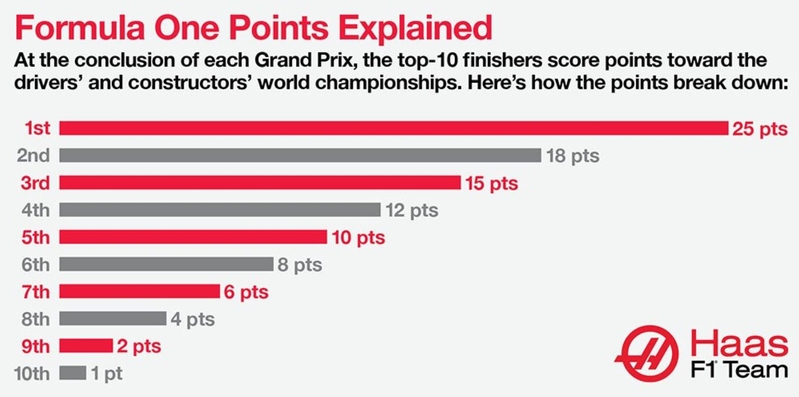
Being lapped does not mean that a driver is unable to collect points, as seen in the 2021 Dutch Grand Prix results shown above. There is a caveat to this rule though in that a driver must complete at least 90% of the race to be eligible to receive points. This is the cut-off point for being ‘classified’ and should a driver complete less than 90% of the circuit they will instead be classed as a non-finisher.
In the 1996 Monaco Grand Prix (below), only three cars were still active when Olivier Panis saw the chequered flag. The Finnish duo of Mika Salo and Mika Hakkinen, who had collided several minutes earlier, was still able to claim points though because they had travelled further than all but four other drivers. If, like modern F1, the top 10 drivers were issued points, Eddie Irvine would have collected some but nobody else. The 66 laps completed by Jacques Villeneuve was not enough to pass the 90% threshold and thus his official result was ‘retired’.
| Pos. | Driver | Number | Team | Race Time | Points | Laps |
|---|---|---|---|---|---|---|
| 1 | Olivier Panis | 9 | LIGIER MUGEN HONDA | 02:00:46 | 10 | 75 |
| 2 | David Coulthard | 8 | MCLAREN MERCEDES | +4.828s | 6 | 75 |
| 3 | Johnny Herbert | 14 | SAUBER FORD | +37.503s | 4 | 75 |
| 4 | Heinz-Harald Frentzen | 15 | SAUBER FORD | DNF | 3 | 74 |
| 5 | Mika Salo | 19 | TYRRELL YAMAHA | DNF | 2 | 70 |
| 6 | Mika Hakkinen | 7 | MCLAREN MERCEDES | DNF | 1 | 70 |
| 7 | Eddie Irvine | 2 | FERRARI | DNF | 0 | 68 |
| NC | Jacques Villeneuve | 6 | WILLIAMS RENAULT | DNF | 0 | 66 |
| NC | Jean Alesi | 3 | BENETTON RENAULT | DNF | 0 | 60 |
| NC | Luca Badoer | 22 | FORTI FORD | DNF | 0 | 60 |
| NC | Damon Hill | 5 | WILLIAMS RENAULT | DNF | 0 | 40 |
An even more interesting example came three decades earlier in 1966 at Monaco.
By the very end of the race, there were still six cars on the track but two of them were quite literally miles behind.
When Jackie Stewart reached the race end, this forced Guy Ligier and Jo Bonnier to stop well before the 90% threshold.
| Pos. | Driver | Number | Team | Race Time | Points | Laps |
|---|---|---|---|---|---|---|
| 1 | Jackie Stewart | 12 | BRM | 02:33:11 | 9 | 100 |
| 2 | Lorenzo Bandini | 16 | FERRARI | +40.200s | 6 | 100 |
| 3 | Graham Hill | 11 | BRM | +1 lap | 4 | 99 |
| 4 | Bob Bondurant | 19 | BRM | +5 laps | 3 | 95 |
| NC | Richie Ginther | 9 | COOPER MASERATI | DNF | 0 | 80 |
| NC | Guy Ligier | 21 | COOPER MASERATI | +25 laps | 0 | 75 |
| NC | Jo Bonnier | 18 | COOPER MASERATI | +27 laps | 0 | 73 |
| NC | Jim Clark | 4 | LOTUS CLIMAX | DNF | 0 | 60 |
| NC | Jochen Rindt | 10 | COOPER MASERATI | DNF | 0 | 56 |
| NC | Jo Siffert | 14 | BRABHAM BRM | DNF | 0 | 35 |
Why Are Races Not Allowed to Continue?
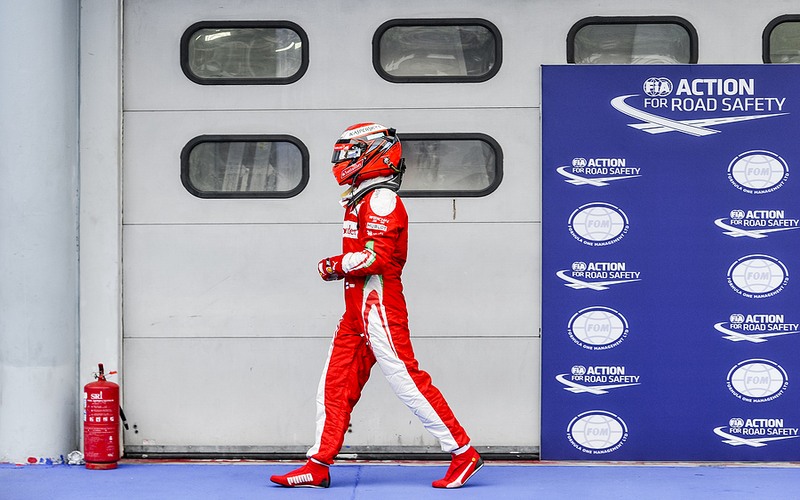
In the above example, Ligier and Bonnier were out of the points places but imagine a similar race in which the top 10 drivers obtained points. By ending the race as soon as Stewart finished, you are denying Bonnier a very lengthy opportunity to challenge Ligier for 5th or 6th place.
Although this was a truly exceptional race, more modern F1 races frequently do see battles, further down the pack, cut a little short because the winner has reached the finishing line. Here is just one example taken from the 2020 Spanish Grand Prix.
| Pos. | Driver | Number | Team | Race Time | Points | Laps |
|---|---|---|---|---|---|---|
| 1 | Lewis Hamilton | 44 | MERCEDES | 01:31:45 | 25 | 66 |
| 2 | Max Verstappen | 33 | RED BULL RACING HONDA | +24.177 | 18 | 66 |
| 3 | Valtteri Bottas | 77 | MERCEDES | +44.752s | 16 | 66 |
| 4 | Lance Stroll | 18 | RACING POINT BWT MERCEDES | +1 lap | 12 | 65 |
| 5 | Sergio Perez | 11 | RACING POINT BWT MERCEDES | +1 lap | 10 | 65 |
| 6 | Carlos Sainz | 55 | MCLAREN RENAULT | +1 lap | 8 | 65 |
| 7 | Sebastian Vettel | 5 | FERRARI | +1 lap | 6 | 65 |
| 8 | Alexander Albon | 23 | RED BULL RACING HONDA | +1 lap | 4 | 65 |
| 9 | Pierre Gasly | 10 | ALPHATAURI HONDA | +1 lap | 2 | 65 |
| 10 | Lando Norris | 4 | MCLAREN RENAULT | +1 lap | 1 | 65 |
Given more time to race, perhaps Perez (hit with a five-second penalty) could have collected 12 points rather than 10 or maybe Vettel could have moved up the order. Some may ask if it is unfair not to give drivers the full race in which to fight for a better position?
There is some argument to say it would be fairer to allow all drivers to go the full distance but it would also pose a massive safety risk. When completing the race, leading drivers cruising around the circuit, perhaps waving to the fans and often weaving across the track. Doing this while there are still competing cars zooming in from behind would just be asking for trouble.
The only solution would be to tell finished drivers to treat their ‘final’ lap before heading into the pits as a normal one. Not only would this deny them some prime celebrating time but it creates a needless risk. Imagine if there was an accident in this victory lap, one that prevents the driver from going up on the podium later on. On these grounds, it makes the most sense to call a halt to competitive driving once the chequered flag has appeared.
Additionally, while it might prove exciting for the one extra lap, think of a situation in which you have one or two drivers that are three or four laps behind. Having to watch the pair of slowest drivers, perhaps half a circuit apart, competing for virtually nothing, does not make for great entertainment and it would just be seen as a needless delay.
